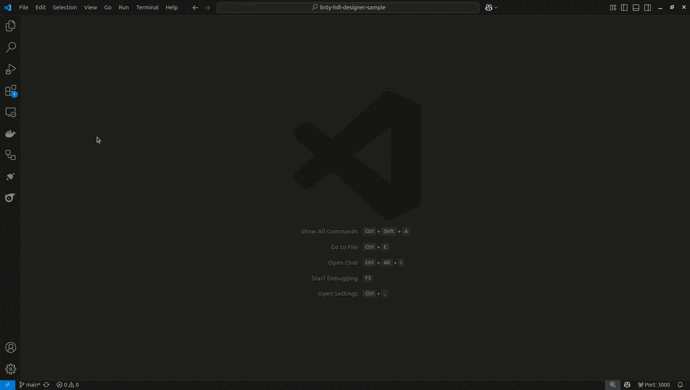HTML Report
An HTML report is generated during a Linty scan. It is also available in VS Code.

Browse
Once the Linty scan has completed, launch a simple web server (with Python for instance) to browse the report:
cd ${PROJET_DIRECTORY}/.linty/report/build/html/
python3 -m http.server 8001
Browse the report at http://localhost:8001
Automate deployment
On GitHub pages
On GitHub pages, at each commit on the main branch.
name: Deploy Linty HTML Report on GitHub Pages
on:
push:
branches: [ "main" ]
jobs:
build:
runs-on: ubuntu-latest
steps:
- name: Git Checkout
uses: actions/checkout@v4
- name: Run Linty Scan
run: |
# Replace with your current Docker command to run a Linty analysis
docker run ...
- name: Upload Website Artifact
uses: actions/upload-pages-artifact@v3
with:
path: .linty/report/build/html
deploy:
environment:
name: github-pages
url: ${{ steps.deployment.outputs.page_url }}
permissions:
contents: read
pages: write
id-token: write
runs-on: ubuntu-latest
needs: build
steps:
- name: Deploy to GitHub Pages
id: deployment
uses: actions/deploy-pages@v4
See also official GitHub Pages documentation.
Note that if you do not deploy the report to the user/organization site but to a project/repository site (such as
https://my_org.github.io/my_repo), you have to set the sonar.hdl.report.urlPath to my_repo for URLs to be properly
generated in the report.
docker run \
...
lintyservices/linty-scanner:latest -Dsonar.hdl.report.urlPath="my_repo"
Where do descriptions come from?
Any comments (either line or block comments) starting with ! are considered as comments to be taken into account for
reporting.
For instance:
--! My instantiation fly08
fly08: fly
generic map (
FLY_GENERIC => '1'
)
port map (
...
Would output:
